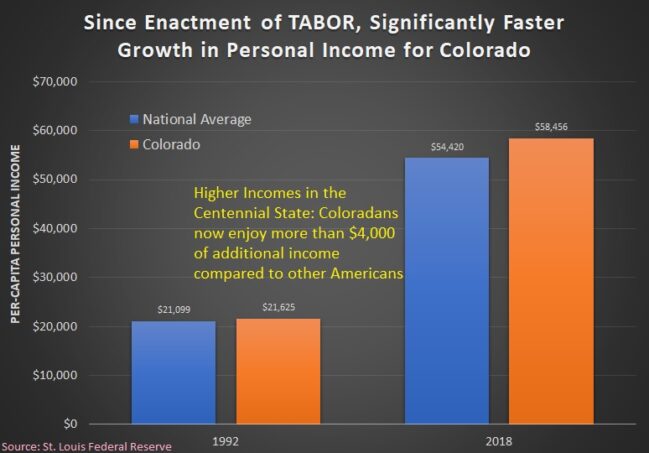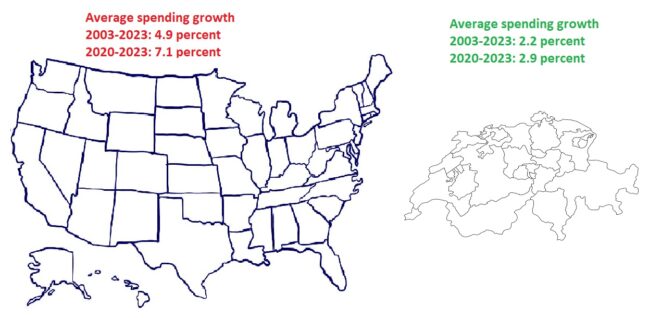November 9, 2024 by Dan Mitchell
Last April, I shared some data showing that Colorado’s Taxpayer Bill of Rights had forced politicians in the Centennial State to return $8.2 billion of tax revenue.
The state’s politicians did not want to return the money. But TABOR is a spending cap and the rules require that any extra tax revenue (above and beyond what would finance allowed levels of spending) has to be returned to taxpayers.
This spending cap has been good news for the state’s economy, as illustrated by the chart.

But I now need to update the benefits of TABOR.
That’s because we have another year of data. And, as explained in this report from Center Square, taxpayers are getting another refund. This time, their savings will be more than $1 billion.
…the Office of the State Auditor confirmed this week that Colorado taxpayers have a refund coming their way. The refund comes because the state collected $1.4 billion more in revenue in Fiscal Year 2024 than the Taxpayer’s Bill of Rights allows, according to the Office of the State Auditor. Colorado voters added TABOR to the state constitution in the November 1992 general election. TABOR reins in government spending by limiting the growth of state revenues to the sum of inflation and the percentage change to the state’s population to create a TABOR growth rate. The state must return any money beyond that amount to its taxpayers.

But I’m going to argue that the big benefit is not the $1 billion-plus refund.
Yes, that’s nice, but what really matters is that the refund means that Colorado politicians could not spend the money.
To elaborate, a spending cap produces more prosperity because government is limited and more resources are therefore in the productive sector of the economy.
I’ll close by recycling my argument in favor of a spending cap in Washington. If that kind of policy existed, and politicians were handcuffed, the current fiscal mess would not exist.
To illustrate the importance of a spending cap, let’s shift from Colorado’s TABOR and look at some numbers I calculated when looking at Switzerland’s “Debt Brake” back in March of last year.
Related

Since that spending cap was imposed by voters more than 20 years ago, the overall burden of government spending in Switzerland has grown by 2.2 percent annually, a far better performance than in the United States, where the fiscal burden has expanded by an average of 4.9 percent per year.
Leave a Reply